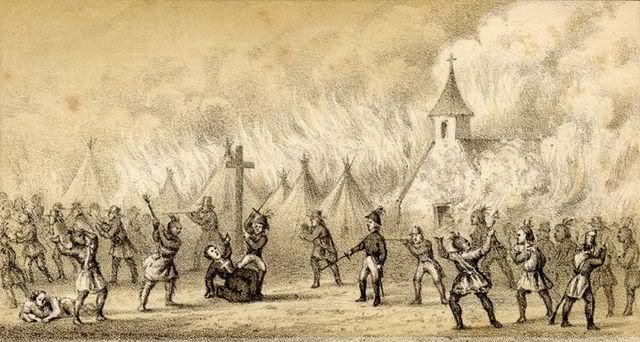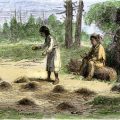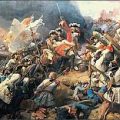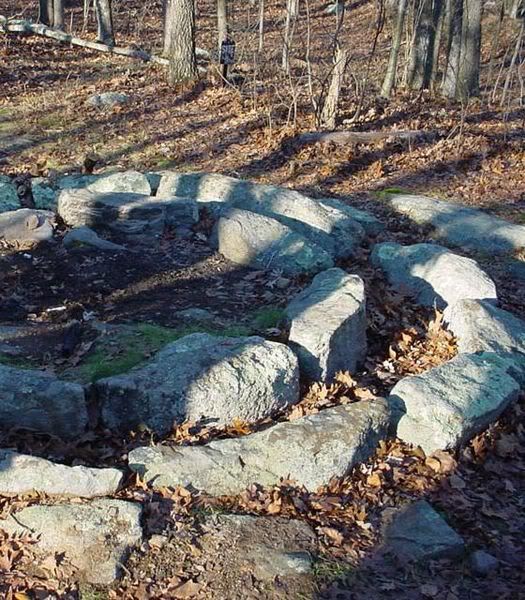While King Philip’s War is probably the best-known Indian war of colonial Massachusetts, there were a number of other Indian wars during the colonial period. One of these was the war against the Abenaki which started in 1722. This was not just an “Indian” War, more importantly it was a religious war: it was a war fought by the Protestant English colonists against the hated, “evil,” and “atheistic” Catholics.
The colonial Puritans were staunchly anti-Catholic and were particularly opposed to the activities of the Jesuit missionaries among the Indians. They were particularly upset that Father Sebastian Rasles (also spelled Rale), a French Jesuit priest, was strongly encouraging the Abenaki to defend both their lands and their culture against the English colonists. Thus, in 1722, Massachusetts governor Samuel Shuttle declared war on the Abenaki. This war is called Drummer’s War, Grey Lock’s War, Lovewell’s War, or Father Rasles’ War.
The Abenaki:
The Abenaki – a corruption of the Innu (a neighboring tribe) word which refers to “the people of the dawn land” – are a group of loosely related Algonquian-speaking people who have lived in the New England area for thousands of years. The Abenaki include the Sokoki on the middle and upper Connecticut River, the Cowasuck farther upriver, the Missisquoi on Lake Champlain, the Pennacook in New Hampshire’s Merrimack Valley, the Pigwacket in the White Mountains, the Androscoggin of western Maine, the Penobscot, Wawenock, and Kennebec of Maine. The Abenaki Confederacy – or WAbenaki Confederacy, as it is sometimes called – also includes the Passamaquoddy, Maliseet, and Micmac. WAbenaki is sometimes used as a collective term for the eastern Algonquian language communities of Abenaki, Maliseet, Mi’kmaq, Passamaquoddy and Penobscot.
At the time of the first European contact, there were an estimated 30,000 Abenaki people living in northern New England and the Maritime Provinces.
The War:
Massachusetts forces (the New England Rangers) set out to find and kill the infamous Father Rasles in 1722. They attacked the village of Norridgewock, plundering the Catholic church and ransacking Father Rasles’ cabin. While the Jesuit priest eluded the English, the raiders claimed that they found letters in his strongbox which proved that he was an agent of the French government and was supplying arms and ammunition to the Indians.
In 1723, Grey Lock (also recorded as Gray Lock and Greylock), a Woronoco living in the village of Missisquoi, led some Abenaki raids against the English settlements in Northfield and Rutland, Massachusetts. Colonial cavalry and scouts were unable to find the raiders.
Massachusetts built Fort Drummer in 1724 in response to Grey Lock’s raids. In spite of the Fort, Grey Lock struck again. The raid was successful even though the colonists had advance notice that the Indians were coming. Massachusetts sent out a force of Rangers to find Grey Lock, but he eluded them and continued raiding deep into Massachusetts.
As a result of his successful raids, Grey Lock was given the name Wawanolet (also spelled Wawanolewat and Wawanotewat) which means “he who fools others” or “he who puts someone off the track.”
The Massachusetts colonial army attacked the Norridgewock (an Eastern Abenaki group). Father Rasles was killed and his corpse was mutilated.

A depiction of the raid on Norridgewock and the death of Father Rasles is shown above.
In 1724, an English force of 87 men under the leadership of John Lovewell attacked a small Indian camp, killing ten people. The English scalped the dead and then returned home to collect the bounties.
Encouraged by his success and the easy money from the bounties, Lovewell immediately embarked on a summer campaign accompanied by forty-seven volunteers. This time, however, the English were ambushed and Lovewell killed.
In retaliation for Grey Lock’s raids, Captain Benjamin, considered an “experienced’ Indian fighter, raised a force of 59 men and set out in 1725 to attack Grey Lock’s home town of Missisquoi. The force returned after a month without encountering any Indians, only to find that Grey Lock had followed them. Grey Lock spent the summer raiding Massachusetts settlements.
Finally, in 1726, the Abenaki signed a peace treaty ending the war. Grey Lock returned to the village of Missisquoi, but never signed the treaty. Grey Lock died about 1750 at about 80 years of age.




Leave a Reply